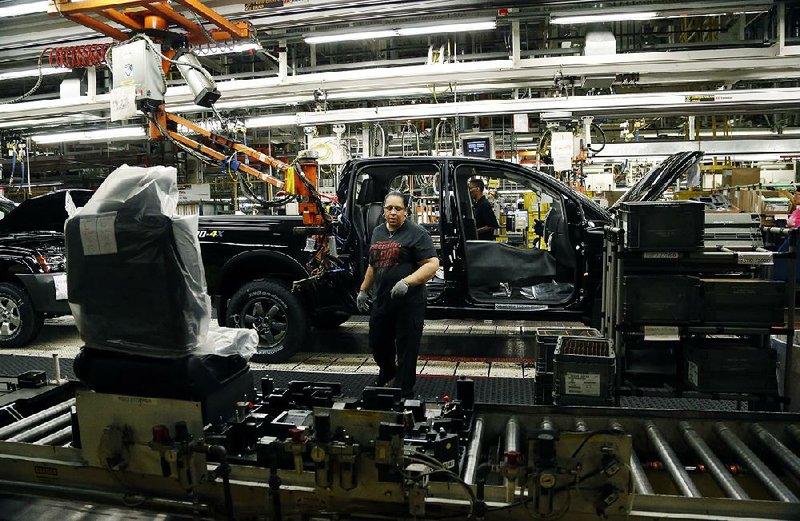WASHINGTON — U.S. factories slowed production in January after two solid months of cranking out goods. The weakness mainly reflected a big drop in output at auto factories that is likely temporary.
Manufacturing output fell 0.4 percent in January from December, the Federal Reserve said Friday. The decline followed increases of 1.1 percent in December and 1.7 percent in November.
“January showed a bit of a payback after the strength in manufacturing toward the end of 2012,” said Sam Coffin, an economist at UBS Securities LLC in Stamford, Conn. “Manufacturing will be growing pretty rapidly as companies have to restock inventories, and there’s overseas as well as domestic demand. We’re on a slightly better path now.”
Overall industrial production edged down 0.1 percent in January compared with December. Output in mining, the category that covers oil and gas drilling, fell 1 percent. Utility output jumped 3.5 percent as a cold snap led more households to turn up their heat.
Factory output, the most important component of industrial production, was dragged lower by a 3.2 percent decline in auto and auto-parts production. The auto industry is coming off its best year for sales in five years, one of the few bright spots in an otherwise bleak manufacturing sector. Sales continue to rise, so production will likely rebound this month.
Still, many factories outside the auto industry have been hurt by a slowdown in consumer spending and weaker global growth that has dampened demand for U.S. exports.
Economists expect healthier output in 2013, partly because U.S. companies have saved large amounts of cash and appear poised to invest some of it in equipment and machinery. Economies in Europe are also healing, and growth in Asia is expected to improve.
“Global growth will still be fairly weak this year, which will prevent industry from firing on all cylinders. But there’s no denying that industrial conditions have recently improved,” said Paul Dales, senior U.S. economist at Capital Economics.
While manufacturing output was down in January, analysts noted there were big revisions that made November and December look even better than first reported. For the fourth quarter as a whole, manufacturing output rose at an annual rate of 1.9 percent, a significant improvement from the earlier estimate of a slight 0.2 percent rate.
A second report Friday showed that manufacturing activity in the New York area posted a big gain this month. The New York Federal Reserve’s Empire State survey rose to 10.04 this month, compared with a negative 7.78 in January. It was the biggest one month improvement in this index in more than two years.
And a closely watched survey released earlier this month suggests overall manufacturing conditions are improving. Manufacturing activity grew last month at the fastest pace since April, according to the Institute for Supply Management.
Factories saw growth in new orders, hired more workers and increased their stockpiles after two months of declines, the survey noted. Readings greater than zero signal expansion in New York, northern New Jersey and southern Connecticut.
Slower growth in stockpiles was a key reason the economy shrank at an annual rate of 0.1 percent in the October-December quarter, the first contraction in 3 1/2 years. Deep cuts in defense spending and fewer exports also contributed to the decline.
However, economists expect that figure will be revised.
That’s because December trade data, which weren’t available when the government calculated its first estimate for fourth-quarter growth, showed solid growth in exports.
Economists at Barclays Capital estimate the economy expanded at a 0.5 percent rate in the fourth quarter. And growth will likely pick up in the January-March quarter to an annual rate of 1.5 percent, analysts forecast.
Information for this article was contributed by Shobhana Chandra of Bloomberg News.
Business, Pages 27 on 02/16/2013

